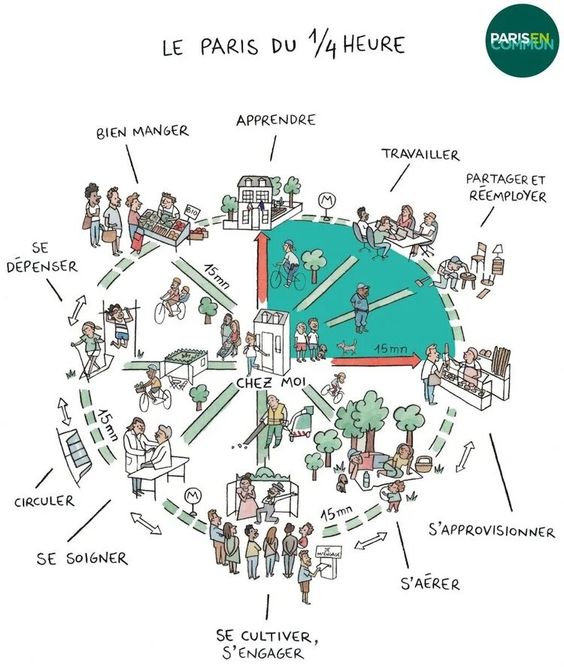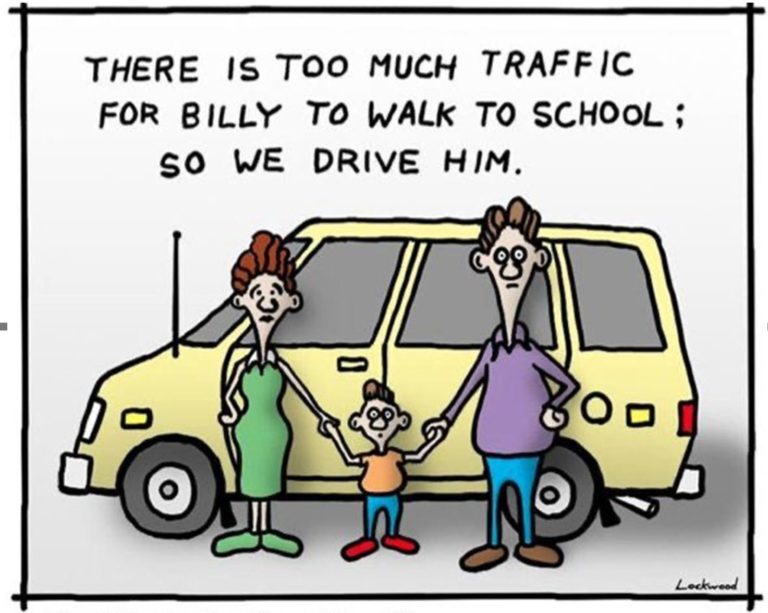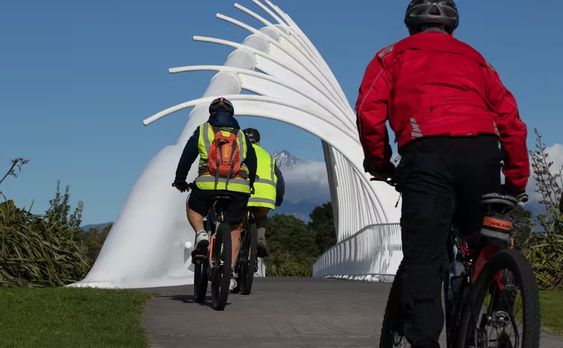
Paris, the city of love, is famous not just for its romantic allure but also for its innovative urban planning strategies. One such strategy that has gained global attention is the “15-minute city” concept. This concept, also known as “ville du quart d’heure”, was championed by Paris’s mayor, Anne Hidalgo, in early 2020.
What is a 15-Minute City?
The 15-Minute City envisions a place where residents can access most of their daily needs within a 15-minute walk or bike ride from their homes. Imagine strolling down tree-lined avenues to work, school, shopping, health services, leisure activities to grab fresh produce, meet friends at a local café, or attend a yoga class—without needing a car or lengthy commutes. It’s a radical shift from the car-centric urban planning of the past. The concept aims to reduce carbon emissions, promote physical activity, and enhance the quality of life for residents.
Paris has been at the forefront of implementing this concept. The city has been reimagining its urban spaces to prioritize pedestrians and cyclists over cars. Streets have been redesigned to include wider sidewalks and dedicated bike lanes. Car parking spaces have been repurposed into bike parking, green spaces, and outdoor seating for cafes.
Moreover, the city has been promoting local businesses and services to ensure residents have access to all their daily needs within their neighborhoods. This includes encouraging the establishment of local grocery stores, pharmacies, schools, and health centers.
The 15-minute city concept also fosters a sense of community. By reducing the need for long commutes, residents have more time to engage with their local community. This can lead to stronger social connections and a greater sense of belonging.
However, implementing the 15-minute city concept is not without challenges. It requires significant investment in urban planning and infrastructure. It also requires a cultural shift towards a slower, more local lifestyle. But Paris has shown that it is possible to transform a bustling metropolis into a collection of 15-minute neighborhoods.
In conclusion, Paris’s adoption of the 15-minute city concept is a pioneering effort in urban planning. It offers a blueprint for other cities around the world to follow. By prioritizing local living and sustainable transportation, Paris is enhancing the quality of life for its residents and leading the way in creating more sustainable and livable cities for the future.
Why Do We Need It?
Throughout history, cities have sprawled outward, prioritizing speed over quality of life. But the 15-Minute City flips the script. It’s about people-centered design, emphasizing well-being, community, and sustainability. Here’s why it matters:
- Health and Happiness: Shorter commutes mean less stress, cleaner air, and more active lifestyles. In a 15-Minute City, you’re not just a commuter but a neighbor.
- Environmental Impact: Reduced car usage translates to fewer emissions, quieter streets, and greener neighborhoods. It’s a win for both residents and the planet.
- Community Resilience: When essential services—grocery stores, schools, parks—are nearby, communities thrive. The 15-Minute City fosters resilience, especially during crises like the pandemic.
- Increased free time: people in 15-minute cities save loads of time running errands and commuting to and from work. This allows for increased free time to do what makes you happy.
- Improved local economy: 15-minute cities promote circular economies where money stays in the community. Buying from diverse local shops and markets boosts the economy for all.
Barcelona’s Superblocks: A Model for All
A revolution is underway in the bustling heart of Barcelona, where the Mediterranean breeze weaves through narrow streets. Welcome to the 15-Minute City, a visionary concept that promises to transform urban living as we know it.
Barcelona leads the charge with its innovative superblocks. These clusters of streets prioritize pedestrians and cyclists, limiting car traffic. Communal gardens, playgrounds, and local markets within each superblock. It’s a microcosm of the 15-Minute City, where life unfolds at a leisurely pace.
Other Global Examples
- Copenhagen: With extensive bike lanes, green spaces, and a stellar public transport system, Copenhagen consistently ranks as one of the world’s most livable cities.
- New York: Even the Big Apple is embracing the 15-Minute City. Walkable neighborhoods, community gardens, and local markets are sprouting across its boroughs.
- Melbourne: Australia’s cultural capital embraces the 20-Minute Neighbourhood concept, emphasizing local amenities and vibrant streets3.
The Future Beckons
As cities reimagine themselves, the 15-Minute City offers a compelling vision: a place where time slows down, connections deepen, and life blossoms within a short walk. So, whether you’re in Barcelona’s sun-drenched squares or New York’s bustling avenues, keep an eye out for the signs of change—the 15-Minute City is here to stay.
Remember: It’s not just about the destination but the delightful journey.
1: Novatr – 15-Minute Cities 2: C40 Knowledge Hub – How to build back better with a 15-minute city 3: Utopia – The 15-Minute-City: How Real Can It Be?




Comments are closed.